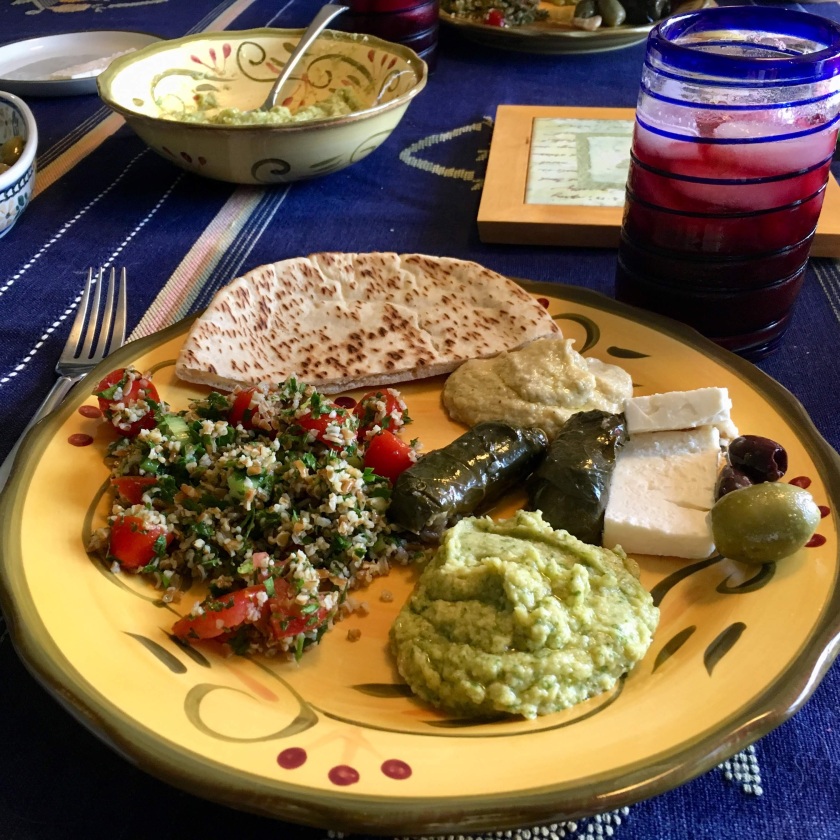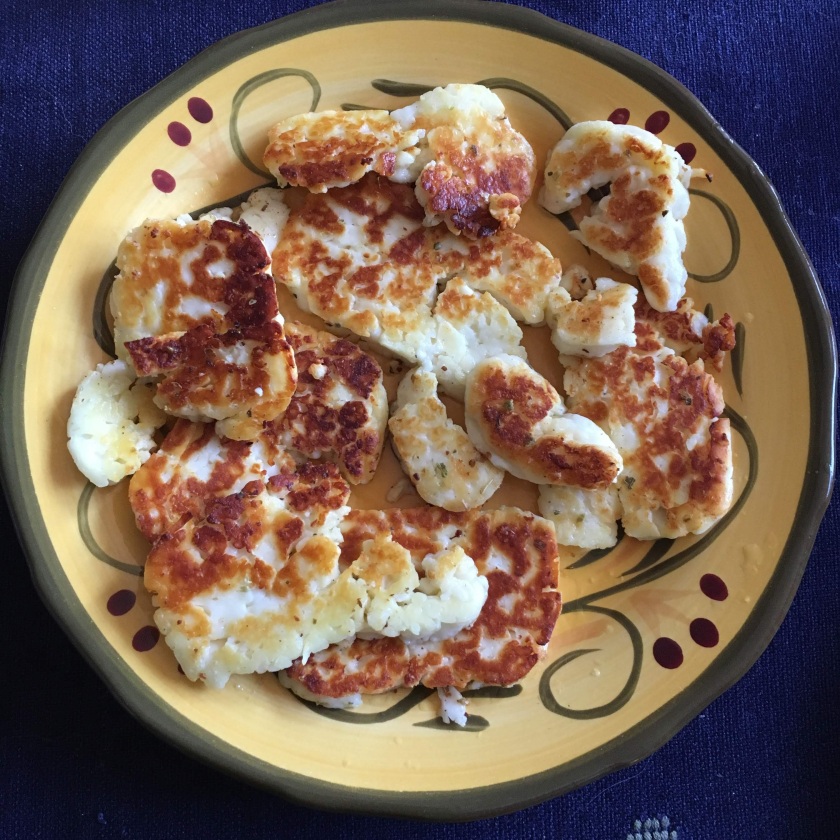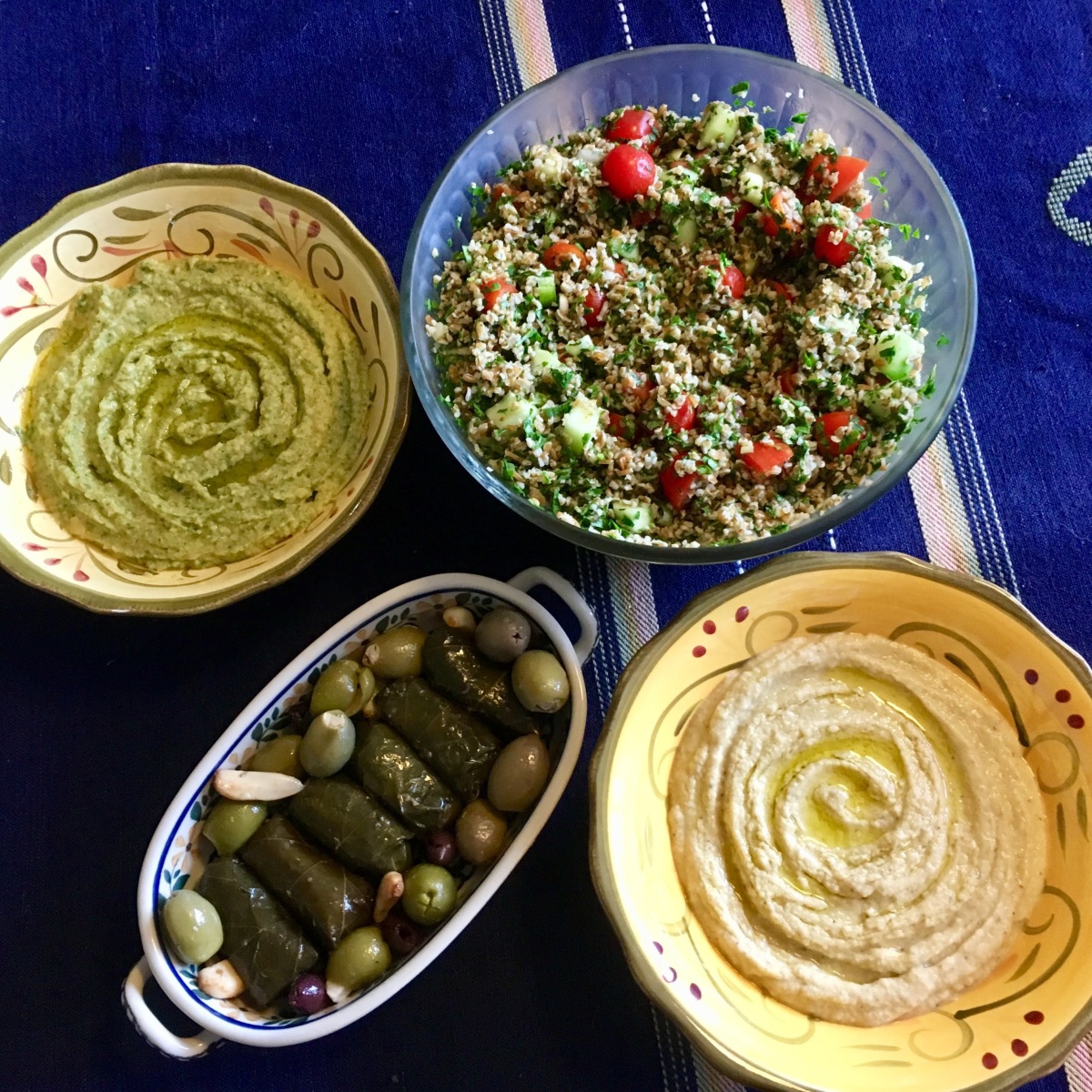My family makes a meal plan each week. We sit down and talk about who has meetings or practices in the evenings and then we decide what we will make for each night. We get a list together and go shopping. That seems so organized, doesn’t it? It took me until my first sabbatical to figure out that this would be a good idea. I was 42 – and I had time off from work – before I could come to this conclusion. Before then, we’d just start gnashing our teeth and pulling our hair around midweek and decide we needed to go out to dinner, and then feel dissatisfied with our options and grump around for a while. Meal planning is better.
So this week during meal planning, I told my husband that I would make a mezze for the Fourth of July. He said, “You sure have a funny idea about the Fourth.”

Okay. That may be true. But maybe I want to be independent today! Also, maybe I like the peoples of the Middle East and feel they should be celebrated instead of foolishly banned from entry into the U.S. because of Islamophobia. There’s that. Also, it is very hot and this is the kind of food I want to eat when I’m hot.
And the food of the Middle East is so easy to love and yet so undervalued. My experience of food in the Middle East and Mediterranean has been transcendent at times. I also love the way people in the region cherish their food.
I grew up in a household where it was expected that you rave about your meals. You roll your eyes back and moan. You ask about spices and ingredients. You fight to scrape the dish it was cooked in. If you said, “That’s really good,” everyone knew that dish was a failure. Ecstasy, and nothing less, marked a meal as a success. My husband has had to adjust to these expectations. My closest friends generally meet these guidelines.
For example, once I gave my friend Jenn a Luxardo cherry in a cocktail I made her (Mr. Fancy – you will meet him in another post). Jenn said, “Oh my god! These taste like what cherries hope they will be when they grow up!” See, that’s my kind of girl. Enthusiasm.
Most of the people I met in the Middle East have been like this. My husband worked for several years on and off in Jordan. I was visiting him and he wanted to take me for a really good shawarma. We got a taxi and Brett directed the driver to take us to Third Circle (Amman is organized around large traffic circles). We drove around and Brett looked for the place but didn’t see it. The driver looked at us questioningly. Where should he stop? He then overheard Brett say the word “shawarma” to me and all was clear. He turned around in his seat and said, emphatically, “Shawarma! Second Circle!” He drove straight to the spot without discussion and dropped us right in front. I recall him being pretty confident he was getting a good tip.
A favorite restaurant in Amman served only two dishes: ful medames (made with fava beans) and hummus bi tahini. That’s it. It was packed, always. That spot was very humble and we loved it, but Brett took me and a friend one night to a very fancy restaurant. We ordered a mezze for three people, and we let the chefs pick the dishes.

Now, a mezze is usually understood as a starter, not the main course. You can have hot and cold dishes, generally small tastes, with meat and without. A good mezze will provide a mix of tastes. Claudia Roden, whose cookbooks I enjoy, tells me that the word derives from t’mazza, meaning “to savor in little bites” in Arabic. Think about tapas or antipasto platters. A mezze is the Middle Eastern or Mediterranean version of that. There are pickled things, and little pastries, and dips. Bright, fresh flavors and colors.
This restaurant we went to was really fancy. It had white tablecloths and about five people assigned to our table, including one who refilled my water glass after every sip. They brought the dishes a few at a time. Remember who I am now. I started exclaiming. I rolled my eyes. I insisted my dining companions try each dish and marvel at it with me. The waiter liked this display. He began to bring each dish with a bit more flourish. Toward the end of night, about twenty small plates in, he set one down and looked at me knowingly. “This one is really special, ” he said. “You are going to love it.”
It was liver. Fortunately, I DO really like liver, so we were in the clear. But my god, we rolled out of that place. It was one of the best meals of my life.
That meal was prepared in a Lebanese style, with a Lebanese chef. All throughout the Middle East, Lebanese cooking is highly praised. But, sadly, if you look up information on Lebanon – let’s say on Wikipedia – it will say nothing about the cuisine. This omission is a crime. I mean, the entry will mention cinema, for goodness sake, but nowhere does it note the intense admiration for the food throughout the region.
And that brings me to another point. I’ve been talking about “Middle Eastern food” as if it is one thing. It certainly is not. There is wonderful variation, to the degree that you can’t really find some common dishes across international boundaries. Koshari is all over Egypt, but I never saw it in Jordan. Mansaf of Jordan is pretty much only found there. Eating in Turkey is not the same as in Greece, and neither are just like Cyprus. I’m not even touching Iranian food! But all share the mezze concept, and all have inspired me at home.

When we lived in Tempe, I never made Middle Eastern food. I didn’t need to. We had Lebanese and Israeli and Palestinian all within walking distance of our apartment. Since moving to Conway, I’ve had to learn. I love that a Jewish girl from Virginia can’t live without her mezze.

Typically, I make a few types of hummus, babaganoush, and tabbouli. I buy dolmades and olives, usually some feta cheese too. Tonight, I mixed it up by frying some haloumi cheese, using some basil in one hummus, and baking my own pita. There was quite a bit of exclamation at our table. My family knows how to do it.

Anne’s Babaganoush
Take a large eggplant and stab it a few times with a knife. Place it on a pretty hot grill and rotate it about every 10 minutes. After about 30-40 minutes, it should be collapsing and blackened on the outside. Bring it inside and let cool slightly in a colander. Cut off the top and discard. Peel off the blackened skin and discard, leaving the flesh in the colander to drain. Peeling should be pretty easy with just your fingers. After the bitter juices have drained out of the flesh, transfer to a food processor. Add 1-2 cloves of garlic smashed in a press, 1/2 teaspoon of kosher salt, the juice of half a large lemon, 2 tablespoons of tahini, and 2 tablespoons of olive oil. Process until smooth and taste for salt, lemon, and tahini. This recipe must adjust for the size of your ingredients, so tasting is crucial. Serve with warm pita bread.
Spicy Herbed Chickpea Dip
(based on a recipe by Deborah Madison)
Drain and rinse one can of garbanzo beans. Place in a food processor with 1/4 cup warm water. Add 1-2 cloves of garlic put through a press. Blend briefly. Then add 1/2 cup fresh cilantro (or I used basil tonight), juice of one lemon, 1/2 teaspoon kosher salt, 1 teaspoon cumin, 1/2 teaspoon coriander, 1/4 teaspoon crushed fennel (I use a mortar and pestle), and a dash of cayenne. Process until smooth. Serve with more warm pita bread.

